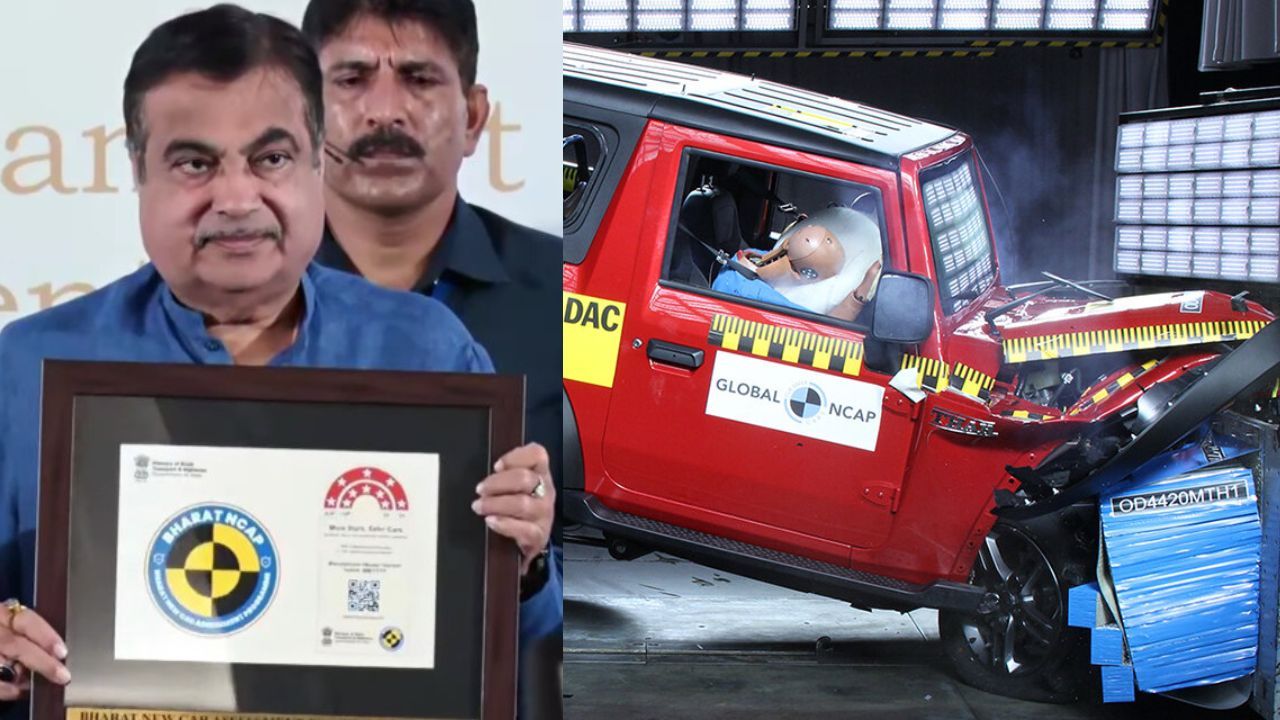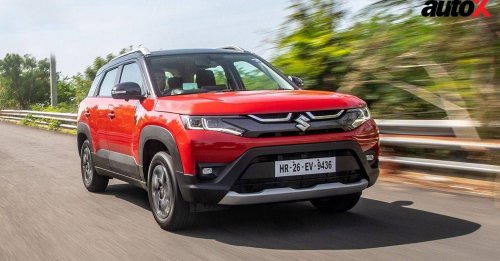
Nitin Gadkari, the Union Minister for Road Transport and Highways, has launched the eagerly anticipated Bharat New Car Assessment Program (Bharat NCAP) today. According to a press release from the ministry, the new NCAP represents a significant advancement in the government's efforts to increase road safety by boosting the safety requirements for motor vehicles weighing up to 3.5 tonnes in India. In a draft notification on the BNCAP, the government suggests giving cars "Star Ratings" based on how well they do in crash tests. Carmakers must submit an application in Form 70-A to the designated central government agency in accordance with Bharat NCAP regulations. The designated agency will provide the cars with star ratings and periodically update the ratings. The vehicle star ratings will be posted on a portal set up by the agency. Beginning on October 1, 2023, the government plans to put the program into effect.
Also Read: Watch: Citroen C3 Gets Zero Star Safety Rating in Latin NCAP Crash Test
What is Bharat NCAP?
The much-anticipated New Car Assessment Program (Bharat NCAP), which has the goal of improving road safety by strengthening the safety requirements for motor vehicles up to 3.5 tonnes in India, has been rolled out by Union Minister of Road Transport and Highways Nitin Gadkari. Automobile manufacturers may voluntarily submit their vehicles for testing in accordance with Automotive Industry Standard (AIS) 197 under this program. It intends to give potential car buyers a tool to compare the collision safety of various motor vehicles on the market.
Bharat NCAP: Key Details
The Adult Occupant Protection (AOP) and Child Occupant Protection (COP) tests, which are carried out by various NCAP organisations, will be performed under the new car assessment program on vehicles weighing up to 3,500 kg (3.5 tonnes). Additionally, Bharat NCAP will permit automakers to choose whether to have their vehicles crash-tested as part of this initiative. An earlier government document proposed a 12-point strategy for crash-test ratings. This program mandates the installation of six airbags, electronic stability control (ESC), three-point seatbelts for every passenger, and improved emergency braking systems, among other safety measures. A higher safety rating will be given to vehicles that have the aforementioned features.
A number of safety features, including dual front airbags, ABS with EBD, rear parking assistance, front seatbelt reminders, and speed alert systems, are mandated for all vehicles sold in India. Soon, it will be required for vehicles to have a 5-star safety rating to have features like six standard airbags and 3-point seatbelts for every passenger. Advanced driver assistance systems (ADAS) may also become a need in the years to come in order to get high safety ratings.
Bharat NCAP: Selection of Cars for the Crash Test
Bharat NCAP enables automobile manufacturers to voluntarily submit their vehicle models for crash testing along with safety evaluation. Once the crash test is completed, the authorities will report the results to the concerned OEMs, and the conclusions drawn will be released. If the makers believe it is crucial, they will be able to request a reassessment. Furthermore, the Bharat NCAP is authorised to independently acquire vehicle models at random from dealerships for crash tests and safety level assessments. The program's credibility and transparency would be further increased as a result. The crash safety program will contain testing facilities for CNG and electric vehicles in addition to the usual internal combustion engine-powered cars and trucks that run on gasoline and diesel.
Also Read: Maruti Suzuki Brezza Feature List Updated, Safety Features Revised
Bharat NCAP: The Test Procedure
Three different categories of vehicle crash tests will be used by the Bharat New Car Assessment Programme (NCAP). On an offset deformable barrier, they will involve a frontal impact test, a side impact test, and a pole side impact test. Through these tests, the car's safety features and its capacity to shield occupants from harm in the case of an accident will be thoroughly assessed. Bharat NCAP will use sensor-equipped dummies to assess the force of impact during simulations of real-world crashes at various speeds, just like Global NCAP and other crash testing programs throughout the world. As per the latest AIS-197 notification, the test speed for the frontal impact test will be 64km/h, whereas the side impact and the pole side impact tests will be conducted at a speed of 50km/h and 29km/h, respectively.
The impact's influence on the dummy occupants will be determined by a post-test evaluation of the sensor data. The adult occupant protection (AOP) and child occupant protection (COP) standards will be used by the Bharat NCAP to rate the safety of cars. The vehicles will be evaluated on a scale of 0 to 5. For a vehicle to be deemed safe for an adult passenger, it must score a total of 27 points or more during the crash test. In a similar vein, if a vehicle receives at least 41 points, it will receive a perfect five-star rating in the child occupant protection area.
























Write your Comment